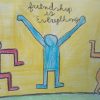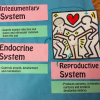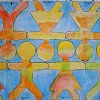-
Recent Lessons
- Keith Haring Murals in San Sebastián
- Keith Haring Murals
- Come To Know Keith Haring
- Organ Systems Mural
- City as Canvas: Artist Spotlight
- Printing with Objects
- Mural Making in the Style Of Keith Haring
- Subway Graffiti Project
- T-shirt Designer
- Keith Haring Semiotics Poster
- Introducing Keith Haring
- Discovering Keith Haring
- Haring Inspired Mural
- All Bottled Up!
- Thinking about Drawings as Symbols
More Resources
Recent Comments
- Daniel Wiener on Symbols & Signs
- Victoria E Sylvestre on Symbols & Signs
- Emoji: Modern Symbol Communication | OH THE ART PLACES WE CAN GO on Thinking about Drawings as Symbols
- coco on Keith Haring Biography
- Crack is Wack II | Muros hablados on Studying Mural: “Crack is Wack”
Duration: 2 - 3 Classes
Keith Haring Murals in San Sebastián
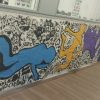
The children in 5th grade in the Saint Patrick's English school in San Sebastian / Donostia have been introduced to the world of Keith Haring.
Starting by reading the book "Keith Haring: The Boy Who Just Kept Drawing"
and learning about his life, art, and context.
Come To Know Keith Haring
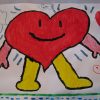
Come to know Keith Haring - in English and Italian
Vieni a conoscere Keith Haring
Art workshop for children from 6 to 12 years old.
Laboratorio artistico creativo per bambini da 6 a 12 anni.
T-shirt Designer
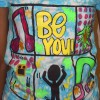
Taking on the role of a t-shirt designer— “Keith Haring Style”
The lesson's goal was for students to pretend that they were “reopening” the Pop Shop in NYC that closed in 2005. They were given the challenge to design and showcase new and improved t-shirts that were marketable to sell. They could use any surface application such as dyeing, bleaching, and fabric paint to accomplish the task and it had to be wearable!
Keith Haring Semiotics Poster
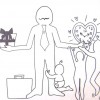
This lesson introduces students to the work of Keith Haring, focusing on his semiotic messages. Students have to create their own semiotic symbols to communicate a positive message that is important in their lives.
Discovering Keith Haring
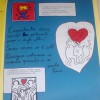
We started browsing your website.We have tried to work in parallel with subjects such as computer science, English, Italian and arte.We have observed the works of Keith, places of production. The children told their feelings, their emotions and interpretations. Haring's works have "hit" the eyes and hearts of the students. Then they tried to make ... And they found that forms, seemingly simple, are complex, well proportioned and exceptionally expressive, but not easy to play.The kids have read the image of some works, they wanted to identify themselves and give their shape and finally have produced a poster that represents their stay and live at school ... to grow and learn together!
Creation and Expression
Reflecting on Text and Context in Art
What does art tell us about the time and place of its creation, and what does the context tell us about an artwork? In this lesson, students consider the work of Keith Haring in the late 1970s and early 1980s, which can be used as a framework for studying any artist and era. Students research historically and culturally significant events as a potential means to understand artists and their works. They create and present slide shows that incorporate images of the work with commentary that place the pieces in their historical and cultural context. Finally, they trace the legacy of their chosen artist via the work of artists who came later or their effect on culture.
Teens in Action/Collaborative Paintings
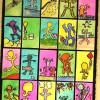
Teens at Floral Park Public Library were asked to design two collaborative wall pieces inspired by the works of Keith Haring. The completed works will be framed and displayed in the young adult area of Floral Park public library.
Hip to be Square
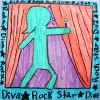
After looking at works from Keith Haring's "Dance" book, 3rd grade students use a square piece of paper to design their own Keith Haring dance composition. Using markers, they outline and color in their shapes solidly like Keith Haring's paintings
Colorful Dogs
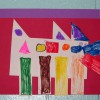
Pre-K and Kindergarten children create collage dogs, similar to those of Keith Haring, using paper cut-out rectangles and triangles.
